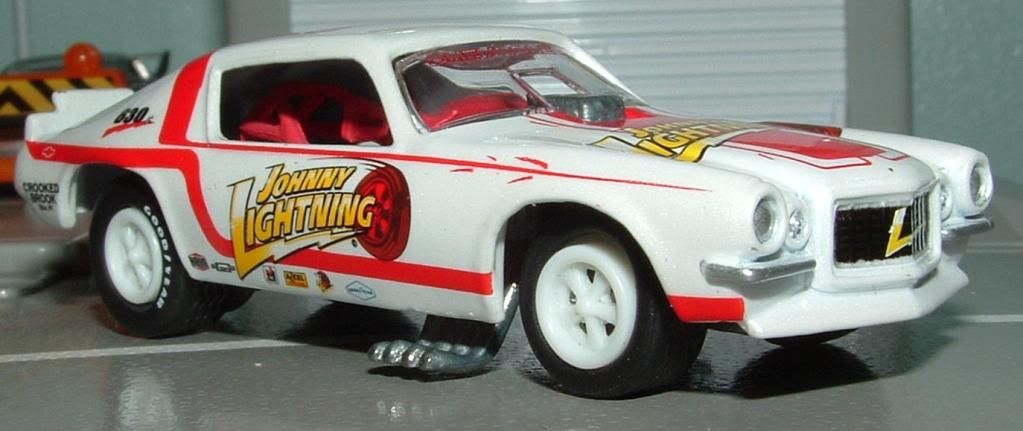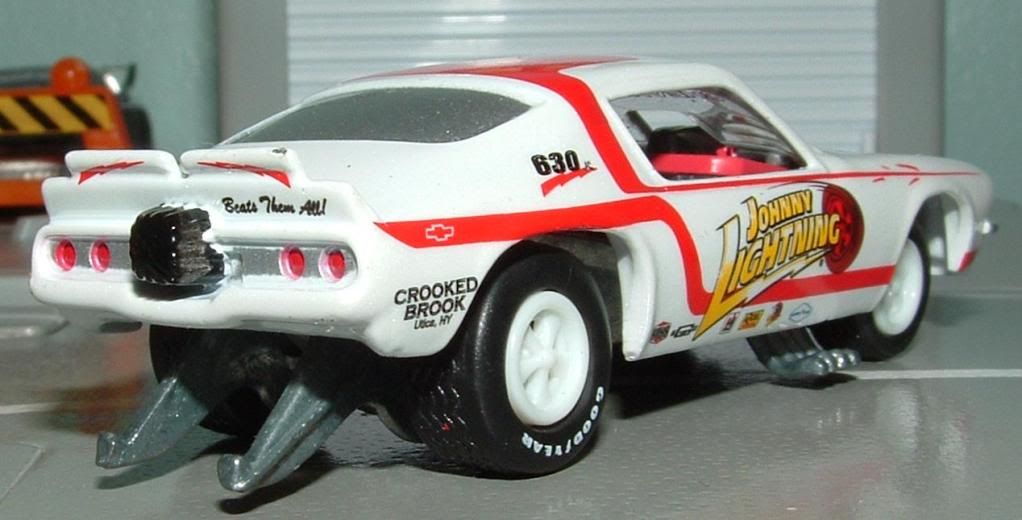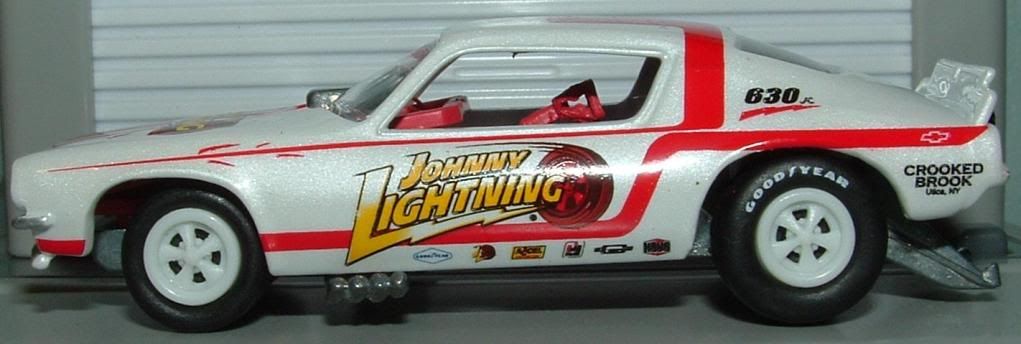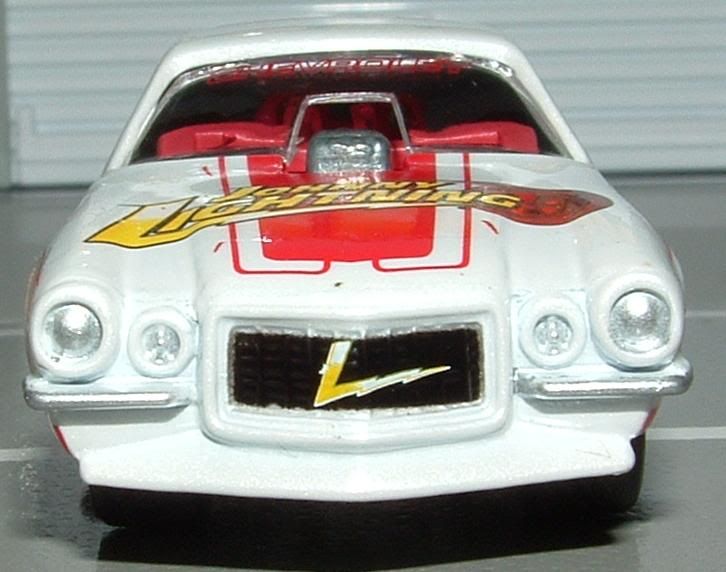
A blog focusing on 1/64 diecast from such popular brands as Hot Wheels, Matchbox, Johnny Lightning, M2 Machines, GreenLight, Tomica, Yat Ming, Majorette, MotorMax, Siku, Corgi, Guisval, Playart, Ertl, Zylmex, Racing Champions, & many more. Swifty's Garage features a daily Car Of The Day and news updates from your favorite brands!
Wednesday, April 20, 2011
Funny Car Of The Day: April 20, 2011
Today's car of the day is Johnny Lightning's 1971 Chevrolet Camaro funny car.
The Chevrolet Camaro is an automobile manufactured by General Motors and Chevrolet under the Chevrolet brand, classified as a pony car and some versions also as a muscle car. It went on sale on September 29, 1966, for the 1967 model year and was designed as a competing model to the Ford Mustang. The car shared its platform and major components with the Pontiac Firebird, also introduced for 1967.
Four distinct generations of the Camaro were developed before production ended in 2002. The nameplate was revived again on a concept car that evolved into the fifth-generation Camaro; production started on March 16, 2009.
For more information and pictures of the real car please visit: Chevrolet Camaro
This little Camaro joined my collection this past weekend by luck of the draw- I won a raffle at the Keystone CARnival and this Camaro was one of my prizes!
Introduced in February 1970, the second generation Camaro was produced through the 1981 model year, with cosmetic changes made in 1974 and 1978 model years. The car was heavily restyled and became somewhat larger and wider with the new styling. Still based on the F-body platform, the new Camaro was similar to its predecessor, with a unibody structure, front subframe, an A-arm front suspension and leaf springs to control the solid rear axle. Road & Track magazine picked the 1971 SS350 as one of the 10 best cars in the world in August 1971. RS, SS and Z28 performance packages gradually disappeared. The Z28 package was reintroduced in 1977, largely in response to the huge success of its corporate stablemate, the Pontiac Trans Am. 1980 and 1981 Z28s included an air induction hood scoop, with an intake door that opened under full throttle.
The 1971 Camaro received only minor appearance changes from its 1970 counterpart. Inside, new high-back Strato bucket seats with built-in headrests replaced the 1970-only low-back seats with adjustable headrests. The biggest changes came under the hood due to a GM-corporate mandate all engines be designed to run on lower-octane regular leaded, low-lead, or unleaded gasoline, necessitating reductions in compression ratios and horsepower ratings. The 250 ci 6, 307 ci V8 and two-barrel 350 V8 were virtually unchanged as they were low-compression regular-fuel engines in 1970 and previous years, while the LT-1 350 V8 used in the Z/28 dropped from 360 to 330 horsepower (250 kW) due to compression ratio decline from 11.0:1 to 9.0:1, and the big 396/402 V8 dropped from 350 to 300 horsepower (220 kW) due to compression ratio drop from 10.25:1 to 8.5:1.
Production and sales dropped due to a 67-day corporate-wide strike at GM that coincided with the introduction of the 1971 models in late September 1970, along with a continued declining interest in the ponycar market fueled by skyrocketing insurance rates for high-performance cars. Rumors of the possible cancellation of the Camaro after 1972 began to surface and were nearly confirmed a year later when another worker's strike hit the assembly plant at Norwood, Ohio, which was the only plant building Camaros and Firebirds. Production had been discontinued at the Van Nuys, California plant in 1970 in favor of Chevy Novas.
Subscribe to:
Post Comments (Atom)







No comments:
Post a Comment